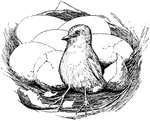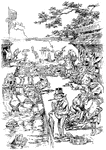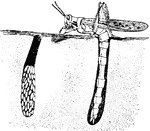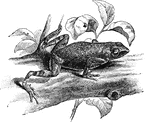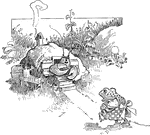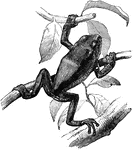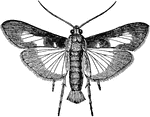
Egg
A body formed in the females of birds, and some other animals, from which their young is produced.
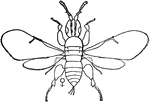
Fig Insect
"The fig insect will not lay eggs in the Smyrna fig, but only in the wild fig; therefore one individual…
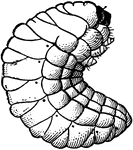
Pea Weevil
"The pea weevil is often found in peas in its larval state during summer and autumn, as a pupa in winter,…
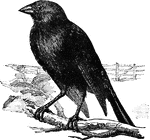
Cowbird
Frequenttly deposites its eggs in the nests of other birds, leaving them to hatch by their foster parents.
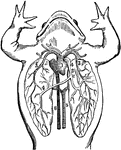
Frog
The heart and lungs of a frog. 1: Heart. 2: Arch of the aorta. 3: Pulmonary artery. 4: Pulmonary veins.…

Peacock
A class of beautiful birds of the pheasant family, native to southeastern Asia. In the wild state peacocks…

Platypus Skull
The platypus is a small, half-aquatic mammal endemic to the eastern part of Australia, and one of the…

Cystignathidae
An amphibian with a toothed upper jaw and subcylindric or little dilated sacral diapopyses.

Beetle Damage
This illustration shows a tree that has been damaged by a sprice-destroying beetle. a, primary gallery;…

Digger Wasp
A popular name for wasps that burrow in the ground, in which th lay their eggs, provisioning each cell…
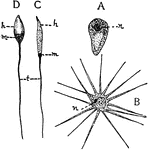
Spermatozoa
"Types of spermatozoa. A, from the round worm (Ascaris) with a cap, somewhat amaeboid; B, from the Crayfish,…
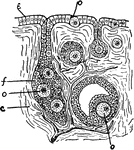
Ovary
"Section through ovary of a young Mammal. The eggs (o) are seen to be formed from the epithelium. c,…
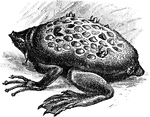
Surinam Toad
Its color is brownish olive, above and whitish below. It is sometimes 7 inches long, and has a peculiarly…
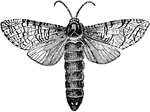
Bombycina
"Nocturnal moths, with the organs of the mouth in many cases so atrophied as to be unfit for use. These…

Bombycina
"Nocturnal moths, with the organs of the mouth in many cases so atrophied as to be unfit for use. These…

Bombycina
"Nocturnal moths, with the organs of the mouth in many cases so atrophied as to be unfit for use. These…

Bombycina
"Nocturnal moths, with the organs of the mouth in many cases so atrophied as to be unfit for use. These…
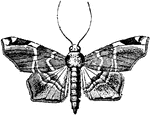
Pyralidina
"The Pyralidina are a group of small moths readily distinguished by their long slender bodies and large…
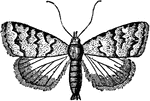
Pyralidina
"The Pyralidina are a group of small moths readily distinguished by their long slender bodies and large…
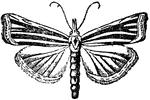
Pyralidina
"The Pyralidina are a group of small moths readily distinguished by their long slender bodies and large…

Pyralidina
"The Pyralidina are a group of small moths readily distinguished by their long slender bodies and large…
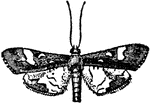
Pyralidina
"The Pyralidina are a group of small moths readily distinguished by their long slender bodies and large…
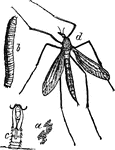
Crane Fly
"Crane-fly (Tipula oleracea): a, eggs; b, larva; c, pupa case as left by the insect, sticking out of…
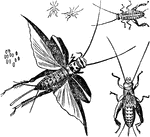
House Cricket
"House Cricket (Gryllus domesticus): a, eggs; b, young just hatched; c, full-grown larva; d, pupa; e,…

Liphistius Desultor
"Liphistius desultor. Under side of the uplifted genital or first opisthosomatic somite of the female;…
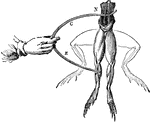
Frog Experiment
"Galvani found that whenever the nerves of a frog's leg were touched by one metal and the muscles by…

Mosquito Eggs
"Eggs of mosquitoes. A, Culex; B, Anopheles photographed on the water, natural size." —Davison,…
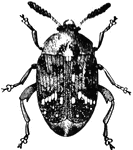
Pea Weevil
"Pea weevil; adult. The pea weevil (Bruchus) is often found in peas in its larval state during summer…

Pea Weevil
"Pea weevil; pupa. The pea weevil (Bruchus) is often found in peas in its larval state during summer…

Strawberry Weevil
"The strawberry weevil in certain seasons has prevented the development of more than a half crop of…

Dissected Frog
"Frog with the left side cut away and some of the organs pulled downward. a, aorta leading from the…
Sexual Organ of Insects
Ovarian tubes of one side, in Polistes, showing eggs in all stages of development, with nutritive…

